 © IDF (Europe) 1998
© IDF (Europe) 1998 © IDF (Europe) 1998
© IDF (Europe) 1998| Attention to the non-metabolic target of "diabetes interfering little with
the patient's general and social well-being" will help metabolic control |
| Non-diabetic | Adequate | Inadequate | |||
| HbA1c | ( DCCT standardized ) | ||||
| %Hb | <6.1 | 6.2-7.5 | >7.5 | ||
| Self-monitored blood glucose | |||||
| Fasting / pre-prandial | |||||
| mmol/l | 4.0-5.0 | 5.1-6.5 | >6.5 | ||
| mg/dl | 70-90 | 91-120 | >120 | ||
| Post- | prandial ( peak ) | ||||
| mmol/l | 4.0-7.5 | 7.6-9.0 | >9.0 | ||
| mg/dl | 70-135 | 136-160 | >160 | ||
| Pre-bed | |||||
| mmol/l | 4.0-5.0 | 6.0-7.5 | >7.5 | ||
| mg/dl | 70-90 | 110-135 | >135 | ||
| It can be dangerous to strive for non-diabetic glucose levels | |||||
| Nutritional management is an integral part of initial and continuing education programmes |
The proposed contribution to energy intake should be :
Ensure then that :
Short-acting unmodified insulin
Consider the median post-prandial ( 2-4 h ) glucose level / hypoglycaemia experience ( and not the next pre-prandial / pre-injection level )
Proceed otherwise as for short-acting unmodified insulin ( see above )
12.4.3 Algorithm for insulin adjustment when glucose levels are ABOVE target
| If | Median blood glucose >7.0 mmol/l ( >125 mg/dl ) | |||
| or | median pre-prandial 5.0-7.0 mmol/l ( 90-125 mg/dl ) and 80% 4.0-8.0 mmol/l ( 70-145 mg/dl ) | |||
| or | median post prandial >10.0 mmol/l ( >180 mg/dl ) ( 1.5-2.0 h after meal ) | |||
| Yes | ||||
| ? | Hypoglycaemia ( symptoms or measured ) | Yes | No change. Review diet and reasons | |
| Or | Some tests <4.0 mmol/l ( <70 mg/dl ) | for hypoglycaemia | ||
| No | ||||
| ? | Stress / illness ( transient hyperglycaemia ) | Yes | No change | |
| No | ( treat acutely if indicated ) | |||
| If | Pre-breakfast hyperglycaemia, and | No change; review diet and evening | ||
| 0200 h glucose <6.0 mmol/l ( <110 mg/dl ) | unmodified insulin | |||
| If | Pre-breakfast hyperglycaemia, and | Increase night-time NPH insulin | ||
| 0200 h glucose >=6.0 mmol/l ( >=110 mg/dl ) | ||||
| If | Morning, or afternoon, or evening | Increase relevant unmodified insulin | ||
| hyperglycaemia | ||||
| If | 0200 h hyperglycaemia, and | No change | ||
| bed-time <7.0 mmol/l ( <125 mg/dl ) | ||||
| If | 0200 h hyperglycaemia, and | Increase evening unmodified insulin | ||
| bed-time >=7.0 mmol/l ( >=125 mg/dl ) | ||||
12.4.4 Algorithm for insulin adjustment when glucose levels are BELOW target
| If | Hypoglycaemia requiring assistance ( and unexplained ) | |||
| or | hypoglycaemia inconveniencing the person with diabetes | |||
| or | measured glucose <4.0 mmol/l ( <70 mg/dl ) | |||
| Yes | ||||
| ? | Isolated / non-recurrent, and | Yes | No change. Review diet and reasons | |
| median glucose >7.0 mmol/l ( >125 mg/dl ) | for hypoglycaemia | |||
| No | ||||
| If | Day-time or evening | Decrease relevant unmodified insulin | ||
| If | Night-time 2300-0300 h, and | Decrease pre-dinner unmodified | ||
| pre-bed glucose levels low | insulin | |||
| If | Night-time 0300-0800 h, or | Increase evening unmodified | ||
| Pre-bed glucose levels high | insulin | |||
The insulin algorithms on this page :
Review whether a repeated change in meal or activity behaviour is occurring; if so advise on a specific insulin adjustment for that change
Consider change in underlying insulin sensitivity ( age / renal / endocrine )
Refer to the insulin dose adjustment section
|
|
Hypoglycaemia unawareness
Consider ( by self-testing ) the possibility of undetected night-time or other hypoglycaemia, especially if HbA1c is lower than average
Provide education and training in recognizing early cognitive dysfunction for people with the problem and their carers
Provide counselling on any resultant life-style problems; caution over driving
Consider :
Train carers to use glucagon if recurrent, unresolved problem; ensure supplies remain in date
| Manage arterial risk aggressively in people with Type 1 diabetes
if any other risk factor is abnormal including family history of arterial disease |
|
|
|
Educate people :
Prescribe :
Diagnose :
Manage :
| Low risk | At risk | High risk | ||
| Serum total cholesterol | ||||
| mmol/l | <4.8 | 4.8-6.0 | >6.0 | |
| mg/dl | <185 | 185-230 | >230 | |
| Serum LDL cholesterol | ||||
| mmol/l | <3.0 | 3.0-4.0 | >4.0 | |
| mg/dl | <115 | 115-155 | >155 | |
| Serum HDL | cholesterol | |||
| mmol/l | >1.2 | 1.0-1.2 | <1.0 | |
| mg/dl | >46 | 39-46 | <39 | |
| Serum triglycerides | ||||
| mmol/l | <1.7 | 1.7-2.2 | >2.2 | |
| mg/dl | <150 | 150-200 | >200 | |
| Kidney status | mmHg |
| Normal albumin excretion rate | <135/85 |
| Abnormal albumin excretion rate | <130/80, or lower if easily attained |
Emphasize importance :
Provide information on :